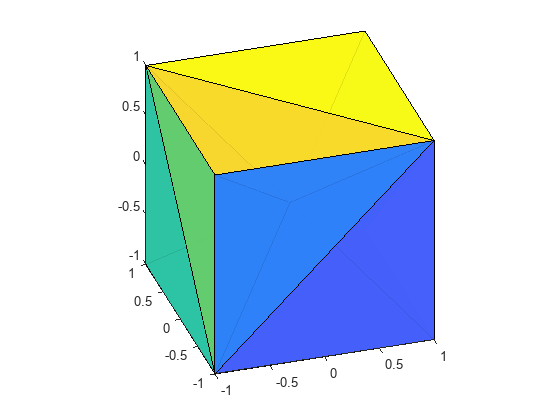delaunayn
N-D Delaunay triangulation
Description
T = delaunayn( computes
a set of simplices such that no data points of X)X are contained in any
circumspheres of the simplices. The set of simplices forms the Delaunay triangulation.
X is an m-by-n array representing
m points in n-dimensional space.
T is a numt-by-(n+1) array where
each row contains the indices into X of the vertices of the corresponding
simplex.
Examples
Input Arguments
Tips
Algorithms
delaunayn is based on Qhull. For more information, see http://www.qhull.org/. For
copyright information, see http://www.qhull.org/COPYING.txt.
Extended Capabilities
Version History
Introduced before R2006a
See Also
delaunayTriangulation | convhulln | tetramesh | voronoin | camorbit
